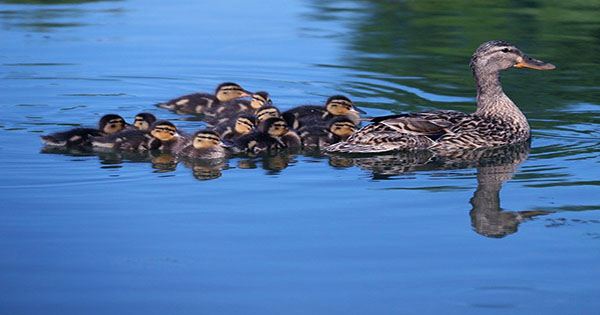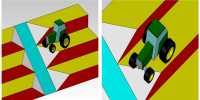The Anatidae family of birds of the same name did not inspire the expression “putting your ducks in a row”, although there is something to say for organized queues improving productivity when it comes to their young. A new study attempted to determine why ducklings swim in a line following their mother, and the results were even lovelier than one could have asked for. The study, which was published in the Journal of Fluid Mechanics, aimed to address three questions: why do they swim this way, what is the ideal shape, and how much energy is saved. The team needed to figure out how to estimate the drag on a group of swimming ducks, so they devised a numerical model to do so (which the mathematically curious among you can inspect here). Their findings showed two noteworthy new findings.
To begin with, the experiment demonstrated that when a duckling swims closely behind its mother, the waves generated by the mother collide with the duckling’s own, interrupting the duckling’s wave drag and instead of pushing the young duck forward. This implies the duckling is using far less energy to keep up with mom because it is virtually surfing in her wake rather than creating its own forward propulsion. However, there is more! During their research, the researchers discovered that by bobbing in a row, the ducklings were able to practically pay it forward, allowing everyone duck in the line, not just the first, to have a smoother trip. The magic started from position four if mom is in position one when each duckling’s wave drag steadily headed towards zero. This allowed the mother duck’s “wave” could pass from duckling to duckling without wasting energy, providing each bob-along in tow an equal lift ahead.
The researchers dubbed these two benefits “wave riding” and “wave passing”, and they believe they are the reasons why ducks evolved this single-file swimming style. “Our research shows that ducklings use a wave-riding and wave-passing approach to reduce wave drag and improve locomotor performance,” the researchers write. “They’re more likely to swim in a single-file pattern, which could assist the individual ducklings in a harmonious way.” They go on to discuss how this adaptive behavior may affect the ducklings’ basic behavior, making them more likely to follow the leader, as well as how this may relate to some birds’ tendency to “imprint” on their parents or other animals.
In addition, if discovering the wave riding, wave-passing behavior of ducklings is not enough to pique your interest, these groundbreaking discoveries could help the maritime sector (which once dumped 28,000 rubber ducks in the ocean). The authors concluded, “These approaches could potentially be applied to the construction of current freight-carrying vessels.” “For example, a water train could convey more freight without incurring additional fuel costs.”















